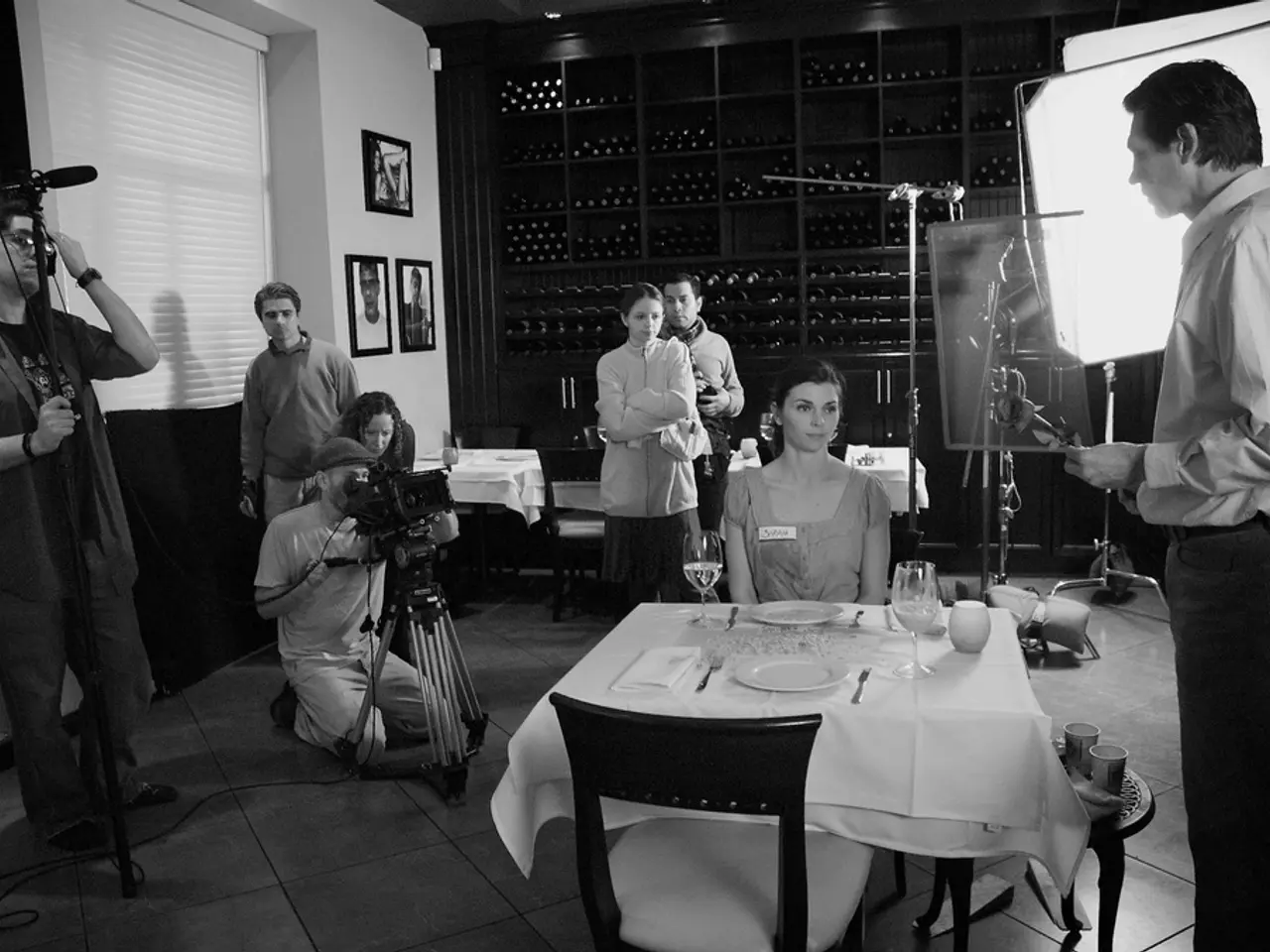Half a Century of Sholay: The Persistent Blueprint of Male Friendship in Bollywood
=====================================================================================
In the realm of Indian cinema, the 1975 classic, Sholay, stands as a cultural landmark, revolutionising the Bollywood buddy film genre and redefining the portrayal of male friendships on screen.
Impact on Indian Cinema
Sholay, with its blend of action, revenge drama, tragedy, romance, and comedy, created a multi-layered "curry western" that broke conventional genre boundaries. The film's innovative approach broadened the thematic and stylistic horizons of Bollywood cinema in the 1970s, influencing countless films thereafter.
The film's dialogues became iconic, its villain Gabbar Singh a cultural archetype, and its characters' camaraderie and conflicts inspiring imitation, parody, and homage. Sholay demonstrated that Bollywood could incorporate global cinematic influences without sacrificing indigenous flavor, encouraging more cross-cultural experimentation in Indian cinema.
Influence on Portrayal of Male Friendships
The friendship between Jai and Veeru, portrayed by Amitabh Bachchan and Dharmendra, set a new standard for male bonding on screen. Their relationship, marked by loyalty, humor, camaraderie, and shared moral purpose, balanced emotional depth with entertaining banter.
Sholay allowed male characters to show vulnerability and affection within the confines of a macho action film, thus softening and enriching the cinematic image of masculinity at a time when male roles were often rigid and stoic. This portrayal of male friendship as central to the narrative and emotional core has influenced many generations of filmmakers and audiences.
The finale of Sholay lifted their friendship beyond plot mechanics into mythic resonance, transforming Jai and Veeru into cinematic icons. This legacy is echoed in subsequent Bollywood films, such as Kal Ho Naa Ho (2003), where the friendship between Aman and Rohit masks a deep loyalty beneath relentless banter, redefining sacrifice.
In Kai Po Che (2013), 3 Idiots (2009), and Zindagi Na Milegi Dobara (2011), the films move away from the larger-than-life loyalty of Jai and Veeru towards a grounded portrayal of bonds tested by time and circumstance. Similarly, the duo in the film, Alluri Sitarama Raju and Komaram Bheem from RRR, share a sacrifice, trust, and emotional depth similar to Jai and Veeru.
In more recent times, Bikram and Bala in Gunday (2014) are comparable to Jai and Veeru, being outlaws bound so tightly they share everything, including a love interest. In War 2 (2025), Kabir and Vikram exude hyper-masculinity, their mutual admiration entwined with relentless rivalry, forging a volatile alliance.
In sum, Sholay’s legacy lies both in transforming Bollywood’s genre landscape and reshaping how male friendships are depicted onscreen, moving away from superficial or functionally secondary roles to become complex, central relationships with lasting cultural resonance.
The legacy of Sholay extends beyond cinema, inspiring various forms of entertainment. For instance, the camaraderie depicted between Jai and Veeru resonates in the realm of sports, showcasing that strong friendships can lead to remarkable achievements.
The entertainment industry, encompassing sports, culture, movies-and-tv, and more, has been enriched by the friendship portrayed in Sholay, as it emphasizes the importance of respect, loyalty, and shared experiences in forging lasting bonds.








